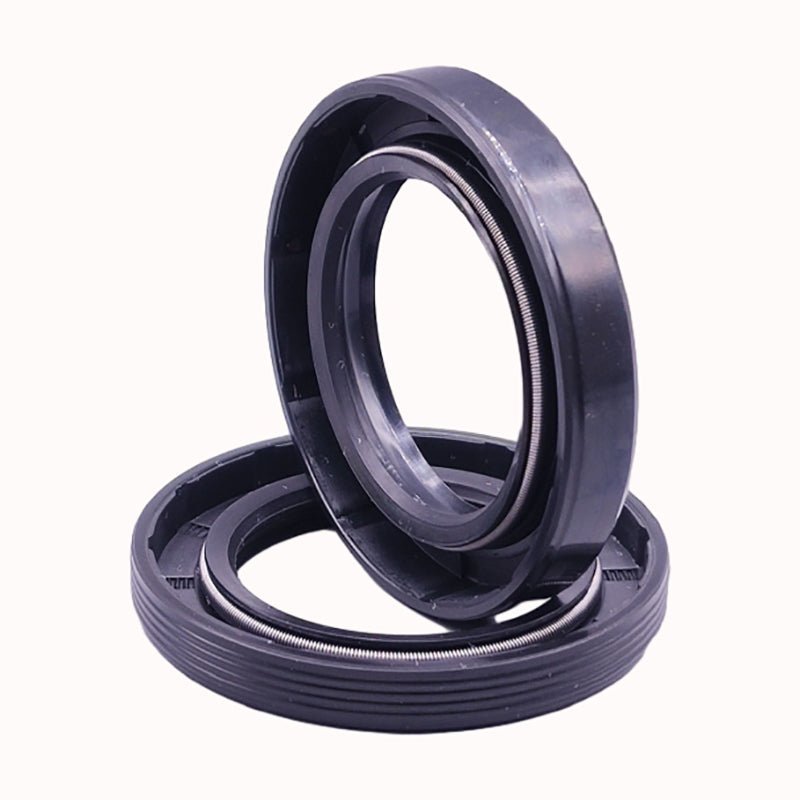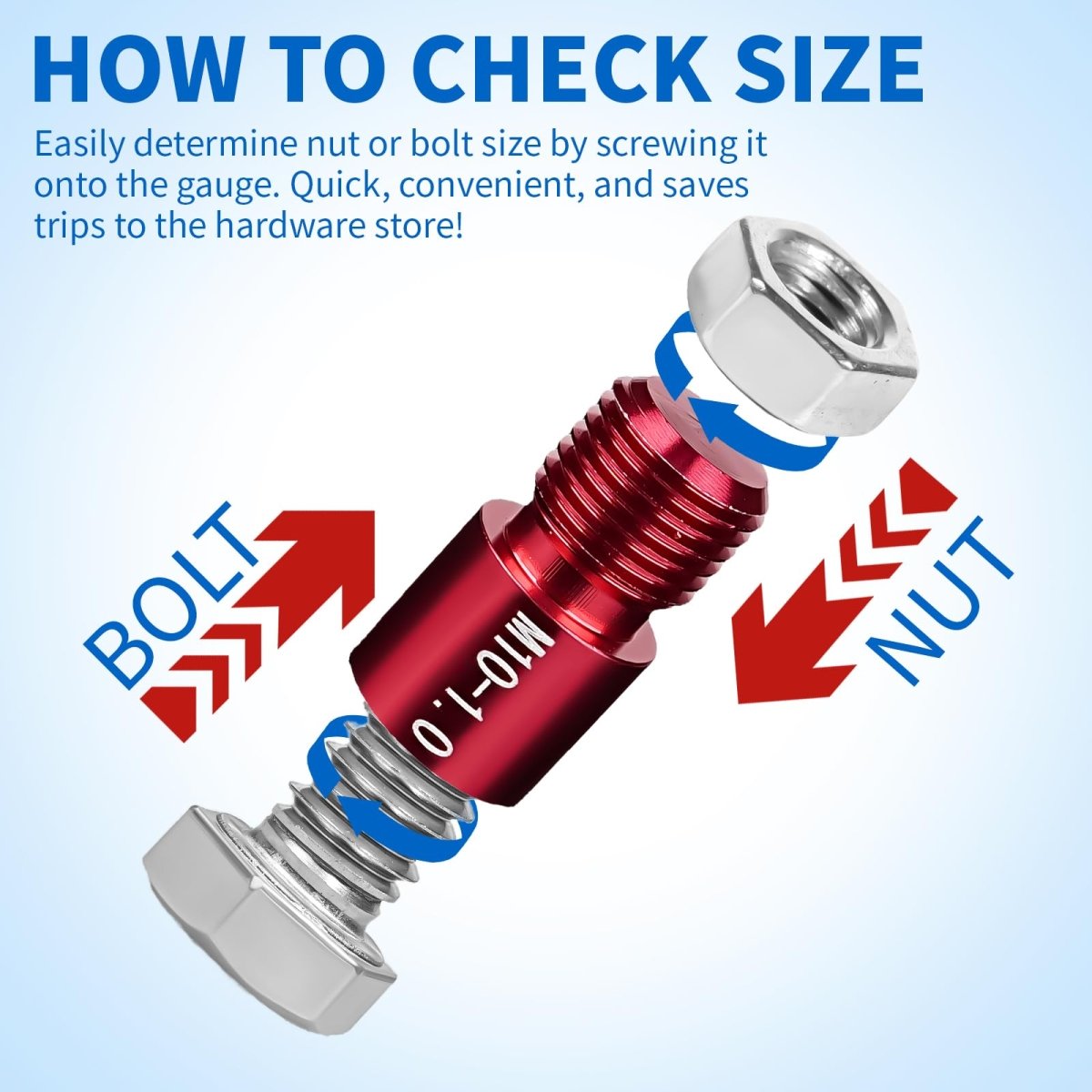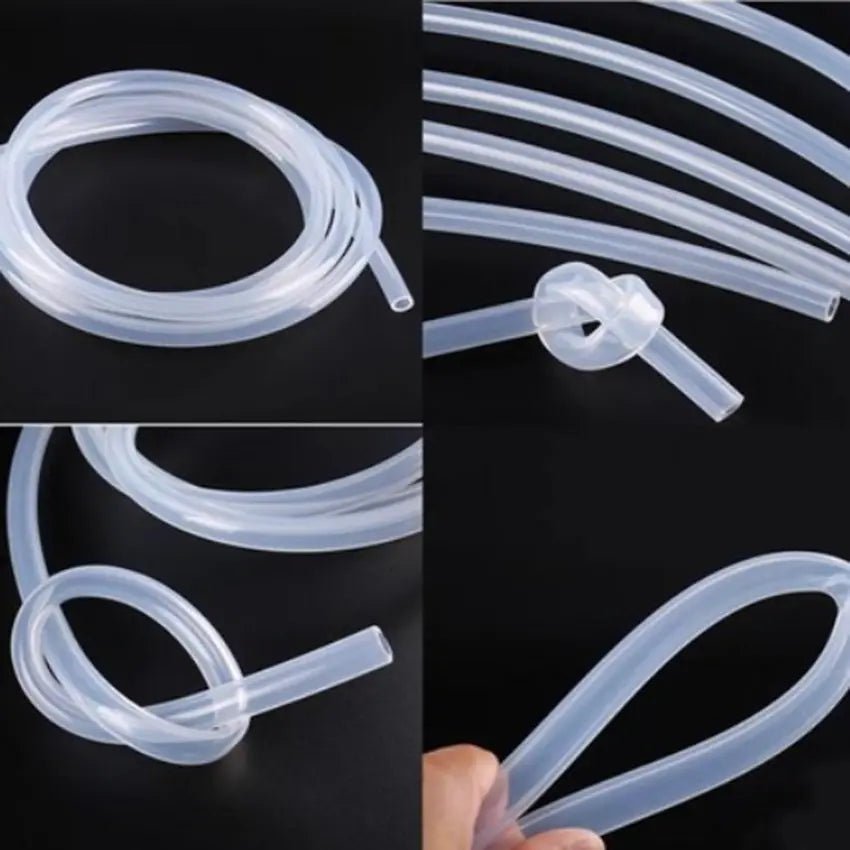Table of Contents:
-
More Than Just a Rubber Ring: The Core Mission of an O-Ring
-
How Does an O-Ring Actually Work? (Simple Physics, Brilliant Design)
-
Where You’ll Find O-Rings Hiding (Everywhere You Look!)
-
In Your Garage & Workshop
-
Under Your Car’s Hood
-
Inside Industrial Machinery
-
In Your Home & Beyond
-
-
The Anatomy of Success: Key O-Ring Properties That Matter
-
Material Matters: Nitrile, Viton, Silicone & More
-
Hardness (Durometer): The Squish Factor
-
Size & Cross-Section: Precision is Non-Negotiable
-
-
Why O-Rings Fail (And How to Prevent Costly Leaks)
-
Compression Set: When the Bounce is Gone
-
Extrusion & Nibbling: Pressure’s Silent Killers
-
Chemical Attack: The Wrong Material Melts
-
Temperature Extremes: Brittle or Mushy
-
Improper Installation: Nicked, Twisted, or Pinched
-
-
Choosing the RIGHT O-Ring: Your Step-by-Step Guide
-
Beyond the Basics: When a Standard O-Ring Isn’t Enough (Hello, Oil Seals!)
-
Installation Secrets: Getting the Perfect Seal Every Time
-
Maintenance & Inspection: Catching Failure Before it Floods
-
FAQs: O-Ring Mysteries Solved
-
Conclusion: Small Part, Mighty Impact
1. More Than Just a Rubber Ring: The Core Mission of an O-Ring
At its heart, the purpose of an O-ring is deceptively simple: to create a reliable, pressure-activated seal between two mating surfaces. Think of it as a dynamic gasket. Unlike flat gaskets that rely solely on bolt compression, an O-ring sits in a groove (gland). When the system is assembled, the O-ring is compressed ("squeezed") radially or axially. This initial compression creates the initial seal.
Here’s where the magic happens:
-
Pressure Activation: When fluid (liquid or gas) pressure builds in the system, it pushes the O-ring against the downstream groove wall and into the microscopic imperfections of the mating surfaces. The higher the pressure, the tighter the seal becomes (within design limits). This self-energizing effect is the genius behind its reliability.
-
The Dual Barrier: A properly functioning O-ring creates two critical sealing lines of contact:
-
Between the O-ring and the bottom of its groove.
-
Between the O-ring and the side walls of the groove.
-
-
Versatility: This simple mechanism allows a single O-ring design to seal effectively across a massive range of applications – from low-pressure garden hose fittings (<15 PSI) to ultra-high-pressure hydraulic systems (10,000+ PSI), and from cryogenic temperatures to oven-hot environments.
In essence, the O-ring’s purpose is to be the affordable, adaptable, and highly effective barrier that prevents leaks, maintains pressure, excludes contamination, and protects sensitive components. It’s the ultimate friction fighter and pressure defender.
2. How Does an O-Ring Actually Work? (Simple Physics, Brilliant Design)
Let’s ditch the textbook diagrams and visualize it:
-
The Groove is Home: The O-ring sits snugly in a precisely machined groove on one component (e.g., a piston, a pipe flange, a housing). This groove has specific dimensions – slightly smaller than the O-ring's cross-section.
-
Initial Squeeze: When you assemble the mating part (e.g., a cylinder bore, a pipe end, a cover), the O-ring gets compressed. It deforms slightly, filling the groove and pressing firmly against all groove surfaces. This creates the initial static seal, good enough for zero-pressure or low-pressure situations.
-
Pressure to the Rescue: As system pressure increases (e.g., water flows, hydraulic fluid pumps, air compresses), it enters the groove cavity behind the O-ring.
-
The Squeeze Play: This pressure acts like an invisible hand, forcefully pushing the O-ring:
-
Away from the source of the pressure.
-
Towards the opposite groove wall (the "downstream" side).
-
Deeper into the microscopic gaps between the mating metal surfaces.
-
-
Sealing Perfection: This forceful wedging action dramatically increases the contact pressure between the O-ring and the groove walls/mating surfaces. It dynamically adapts the seal to the exact pressure, compensating for tiny surface irregularities, vibrations, and even slight wear. The higher the pressure, the tighter it seals (up to its design limit).
Key Takeaway: The O-ring isn't just a passive plug. It's an active sealing partner that leverages system pressure to enhance its performance. This is why a correctly sized and installed O-ring in the right material is incredibly reliable.
3. Where You’ll Find O-Rings Hiding (Everywhere You Look!)
The purpose of an O-ring is universal, making it one of the world's most widely used mechanical components:
-
In Your Garage & Workshop:
-
Air compressor fittings & hoses
-
Pressure washer wands & connections
-
Hydraulic jack cylinders
-
Fuel line connectors (older small engines)
-
Water faucet cartridges (under the handle)
-
Spray gun nozzles & fluid tips
-
-
Under Your Car’s Hood (and Beyond):
-
Fuel injectors
-
Oil filters & coolers
-
Transmission cooler lines
-
Power steering hoses & racks
-
A/C system service ports & components
-
Engine coolant passages (thermostat housings, water pumps)
-
Brake master cylinders & calipers (often as secondary seals)
-
-
Inside Industrial Machinery (The Heavy Lifters):
-
Hydraulic cylinders & valves (Pumps, control valves, actuators)
-
Pneumatic systems (Air cylinders, valves, FRL units)
-
Pumps (Water, chemical, fuel)
-
Fluid power systems
-
Process equipment (Valves, pipe flanges, reactors)
-
Shaft seals on rotating or reciprocating equipment (often paired with or replaced by specialized rotary shaft seals for demanding applications)
-
-
In Your Home & Beyond:
-
Kitchen and bathroom faucets
-
Appliance water lines (Refrigerators, dishwashers, ice makers)
-
Pool and spa filters/pumps
-
SCUBA diving regulators & tanks
-
Bicycle suspension forks & shocks
-
Hydraulic log splitters
-
Even space suits and rocket engines!
-
The common thread? Anywhere two parts connect and fluid (liquid or gas) needs to be contained under pressure or vacuum, the purpose of an O-ring is likely being fulfilled.
4. The Anatomy of Success: Key O-Ring Properties That Matter
Not all O-rings are created equal. Choosing the right one is critical to fulfilling its purpose reliably. Here’s what defines performance:
-
Material Matters (The #1 Factor):
-
Nitrile (NBR, Buna-N): The most common, general-purpose O-ring. Excellent resistance to petroleum oils, fuels, water, hydraulic fluids. Good compression set. Temperature Range: -40°F to +250°F (-40°C to +121°C). Ideal for: Automotive fluids, hydraulics, fuel lines, water applications.
-
Viton® (FKM): Premium fluorocarbon elastomer. Exceptional resistance to high temperatures, chemicals, oils, fuels, ozone, and weather. Temperature Range: -20°F to +400°F (-29°C to +204°C) (Special grades go higher/lower). Ideal for: Aggressive chemicals, high-temp engines, aerospace, critical seals.
-
Silicone (VMQ): Excellent flexibility at extreme cold and high heat. Good ozone/weather resistance. Poor tear strength and abrasion resistance. Avoid dynamic seals or petroleum oils. Temperature Range: -85°F to +400°F (-65°C to +204°C). Ideal for: Static seals in food-grade, medical, or high/low temp applications.
-
EPDM: Excellent resistance to hot water, steam, brake fluid (DOT 3/4), ozone, and weathering. Poor resistance to petroleum oils/fuels. Temperature Range: -60°F to +300°F (-51°C to +149°C). Ideal for: Brake systems, hot water/steam, coolant, outdoor weather seals.
-
Neoprene (CR): Good all-around resistance to weathering, ozone, moderate oils, and refrigerants. Better flame resistance than Nitrile. Temperature Range: -40°F to +250°F (-40°C to +121°C). Ideal for: Refrigeration, general outdoor use.
-
PTFE (Teflon®): Not an elastomer! Rigid material. Extreme chemical resistance, very high temp. Used for specialized backup rings or seals where no elasticity is needed.
-
-
Hardness (Durometer - Shore A Scale): Measured in "Shore A" (e.g., 70A).
-
*Softer (50A-70A):* Better sealing on rough surfaces, low pressure. Easier to install but more prone to extrusion.
-
*Medium (70A-80A):* Most common. Good balance of sealability, extrusion resistance, and ease of installation.
-
*Harder (90A+):* Better for high pressure, resists extrusion. Needs very smooth surfaces, harder to seal at low pressure.
-
-
Size & Cross-Section (Precision is Everything): O-rings are defined by two critical dimensions:
-
Inside Diameter (ID): Must match the groove's inner diameter closely.
-
Cross-Section (CS): The thickness/diameter of the O-ring "cord." Must match the groove depth and width.
-
Tolerance: AS568 is the standard aerospace size numbering system (e.g., -001 to -475). Metric sizes (e.g., 2x4mm) are also common. Using the wrong size defeats the purpose of an O-ring instantly.
-
5. Why O-Rings Fail (And How to Prevent Costly Leaks)
Understanding failure modes helps you choose better and install correctly:
-
Compression Set: The O-ring permanently loses its elasticity and doesn't spring back after compression. It flattens, losing sealing force.
-
Causes: Wrong material (too soft), excessive temperature, prolonged over-compression, chemical incompatibility.
-
Prevention: Choose harder material for high temps, ensure correct gland design (proper squeeze), use high-temperature resistant material (Viton).
-
-
Extrusion & Nibbling: High pressure forces the O-ring material into the tiny gap between mating parts. Pieces can get "nibbled" off.
-
Causes: Excessive clearance gap, pressure spikes, too-soft O-ring material, lack of backup rings.
-
Prevention: Use harder O-ring, reduce clearance gap (tighter machining), install anti-extrusion backup rings (especially above 1500 PSI).
-
-
Chemical Attack (Degradation): The O-ring material swells, shrinks, hardens, softens, cracks, or dissolves.
-
Causes: Using the wrong material for the fluid. Nitrile swells in brake fluid, Viton swells in ketones, Silicone dissolves in gasoline.
-
Prevention: ALWAYS consult chemical compatibility charts for your exact fluid and conditions. When in doubt, Viton is often a safe (but pricier) bet for chemicals.
-
-
Temperature Extremes:
-
Too Cold: Material becomes brittle and cracks during installation or operation.
-
Too Hot: Accelerates aging, compression set, chemical attack.
-
Prevention: Choose material rated for your operating temperature, not just ambient. Consider thermal cycling.
-
-
Improper Installation: The #1 cause of early failure!
-
Nicking/Cutting: Sharp edges on grooves or threads slice the O-ring during assembly.
-
Twisting: The O-ring gets rolled or twisted in the groove, creating a leak path.
-
Incorrect Sizing: Too small = insufficient squeeze. Too large = over-compression or prevents assembly.
-
Pinching: O-ring is pinched between misaligned parts.
-
Lack of Lubrication: Dry installation increases friction, tearing risk, and can hinder initial sealing.
-
Prevention: Use installation tools/cones, chamfer sharp edges, lubricate generously with compatible grease or fluid, align parts carefully.
-
6. Choosing the RIGHT O-Ring: Your Step-by-Step Guide
Don't guess! Follow this process:
-
Identify the Fluid: What liquid or gas is it sealing? (e.g., Engine oil? Hydraulic fluid? Gasoline? Water? Refrigerant? Compressed air? Chemical solvent?)
-
Determine Operating Temperature: What's the continuous operating temp? What are the min/max extremes it might see?
-
Check Pressure Range: Static pressure? Dynamic pressure? Pressure spikes? Vacuum?
-
Application Type: Static seal (groove doesn't move)? Reciprocating (back-and-forth)? Rotary (shaft spinning)? (Rotary motion is tough on standard O-rings!).
-
Environment: Exposure to ozone, sunlight (UV), weathering, abrasion?
-
Consult Compatibility Charts: Cross-reference fluid and temperature with material capabilities (Nitrile, Viton, EPDM, etc.). Parker Hannifin's "O-Ring Chemical Compatibility App" is excellent.
-
Determine Hardness: Based on pressure, surface finish, and application (see Section 4). 70A-90A covers most needs.
-
Measure PRECISELY: Use calipers to measure the groove ID and depth/width. Match to AS568 or metric size charts. Never eyeball it!
-
Consider Backup Rings: Needed for high pressure (>1500 PSI) or large gaps to prevent extrusion. Usually PTFE or Nylon.
7. Beyond the Basics: When a Standard O-Ring Isn’t Enough (Hello, Oil Seals!)
While the purpose of an O-ring is fundamental, it has limitations, especially in demanding rotary applications (shafts spinning at high speeds):
-
The Challenge: Standard O-rings in a simple groove struggle with:
-
High rotational speeds causing friction, heat, and wear.
-
Preventing lubricant leakage out while excluding dirt and water in.
-
Handling radial shaft movement (wobble).
-
-
The Solution: Purpose-Built Oil Seals (Radial Shaft Seals):
-
Integrated Design: Combines a precision metal case, a primary sealing lip (often Nitrile or Viton), a dust lip, and a spring (garter spring) that maintains constant pressure on the sealing lip against the shaft.
-
How They Excel:
-
The spring ensures consistent contact pressure as the lip wears.
-
The lip design creates a sharp sealing edge for minimal friction and heat.
-
The metal case provides rigidity and easy press-fit installation.
-
Optional dust lips protect against external contamination.
-
-
The Critical Dimension: Shaft Diameter. Oil seals are sized by the Inner Diameter (ID) of the shaft they seal on.
-
For reliable sealing on rotating shafts (pumps, gearboxes, engines, axles), an oil seal is specifically engineered for the job. Trying to force a standard O-ring into this role often leads to rapid failure and leaks.
Need a robust solution for rotating shafts? Explore our precision-engineered oil seals, sized for critical applications:
Shop Heavy-Duty Oil Seals (ID 55mm - 80mm+)
(Perfect for gearboxes, pumps, industrial equipment, and high-wear DIY projects)
8. Installation Secrets: Getting the Perfect Seal Every Time
A perfect O-ring can fail instantly if installed wrong. Master these techniques:
-
Cleanliness is Godliness: Wipe the groove and mating surfaces spotless. Dirt is the enemy. Use lint-free cloths.
-
Inspect: Check the O-ring for nicks, cuts, flat spots, or debris before installation.
-
Lubricate GENEROUSLY: Coat the O-ring and the groove/shaft/bores with a lubricant compatible with both the O-ring material and the system fluid. Silicone grease is often safe; use system oil/fuel if appropriate. Lubrication:
-
Reduces friction during assembly (prevents twisting/nicking).
-
Helps the O-ring seat properly.
-
Protects it from initial dry running.
-
-
Respect Sharp Edges: Cover threads and sharp corners with tape, use an installation cone/sleeve, or chamfer edges significantly. Never drag an O-ring over a sharp thread!
-
Avoid Stretching: For internal seals (piston), stretch minimally. For external seals (rod), guide carefully into the bore without rolling.
-
Avoid Twisting: Gently roll or feed the O-ring into place. Ensure it sits flat and untwisted in the groove.
-
Align Carefully: Bring mating parts together squarely. Avoid cocking or forcing, which can pinch or shear the O-ring.
-
Tighten Evenly: If bolts are involved, tighten them gradually and in a star/cross pattern to apply even pressure. Don't overtighten!
-
For Oil Seals:
-
Lubricate the seal lip and shaft.
-
Press squarely using a driver or socket that contacts only the outer metal case. NEVER hammer directly on the sealing lip!
-
Ensure the seal is driven in straight and to the correct depth.
-
9. Maintenance & Inspection: Catching Failure Before it Floods
Proactive checks save downtime and repair costs:
-
Visual Inspection (During Routine Maintenance):
-
Look for visible leaks (seepage, drips).
-
Check for O-ring extrusion (material bulging out of the groove).
-
Look for signs of cracking, hardening, or excessive swelling.
-
-
Preventative Replacement:
-
In critical systems or hard-to-access locations, replace O-rings based on hours of operation or time in service (consult manuals or experience), even if they look okay. Compression set happens internally.
-
Always replace O-rings during any major disassembly – it's cheap insurance.
-
-
Record Keeping: Note the material, size, and location of critical O-rings for future replacement.
-
Oil Seal Specifics:
-
Listen for unusual noises (whining/scraping can indicate a dry or failing seal lip).
-
Check for lubricant leakage behind the seal or contamination ingress.
-
Feel for excessive shaft play (wobble) – this rapidly destroys seals.
-
10. FAQs: O-Ring Mysteries Solved
-
Q: Can I reuse an O-ring?
-
A: Generally No. Once compressed, they take a set. Reusing risks leaks due to reduced elasticity or unnoticed damage. Exceptions might be made for large, easily inspected, low-pressure static seals if it looks perfect and was only used briefly. But new is best.
-
-
Q: What's the difference between an O-ring and a gasket?
-
A: O-rings are elastomeric loops that seal primarily via radial/axial compression in a groove and are pressure-activated. Gaskets are typically flat sheets (rubber, cork, metal, composite) compressed between two flanges, relying solely on bolt force for sealing. O-rings handle higher pressures and dynamic applications better.
-
-
Q: Why do O-rings leak at low pressure?
-
A: Likely causes: Insufficient initial compression (wrong size, groove too deep), groove surface too rough, O-ring nicked/twisted during install, material too hard for the surface finish, or chemical degradation causing shrinkage/hardening.
-
-
Q: Can O-rings seal a vacuum?
-
A: Yes! But the sealing mechanism changes. Vacuum tries to pull the O-ring into the gap. Design needs careful attention to groove depth (less initial squeeze often needed) and material choice (low outgassing materials like Viton or FFKM are preferred for high vacuum).
-
-
Q: What lubricant should I use on O-rings?
-
A: Use lubricants compatible with the O-ring material and the system fluid. Silicone grease is widely compatible with NBR, EPDM, Silicone, and FKM. Avoid petroleum jelly on Silicone. PTFE paste is excellent for thread seals. When possible, use the system fluid itself (oil, grease, water-glycol).
-
-
Q: When should I use an oil seal instead of an O-ring?
-
A: Primarily for rotating shafts. If you have a shaft spinning at any significant speed passing through a housing (pump shaft, gearbox output, axle, motor shaft), an oil seal is the correct, purpose-built solution. Standard O-rings in a groove are for static or slow-reciprocating seals.
-
11. Conclusion: Small Part, Mighty Impact
The humble O-ring proves that brilliant engineering often lies in elegant simplicity. Its core purpose – to create a dynamic, pressure-enhanced seal – makes it indispensable across countless industries and DIY projects. By understanding how they work, why they fail, and how to choose and install the right one, you move from hoping a seal works to knowing it will. You prevent messy leaks, costly downtime, and component damage.
Remember:
-
Material and Size are King (and Queen).
-
Installation is make-or-break. Lubricate, protect from edges, align carefully.
-
Know when to upgrade. For spinning shafts, trust a purpose-built rotary shaft oil seal.
Don't let a 10-cent seal cause a $1000 repair. Stock up on the right O-rings and upgrade to reliable oil seals for your critical rotating equipment:
Get Precision Seals & O-Ring Essentials Here
Got a tricky sealing challenge or an O-ring horror story? Share your experiences in the comments below – let's solve it together! Happy (Leak-Free) Building!








